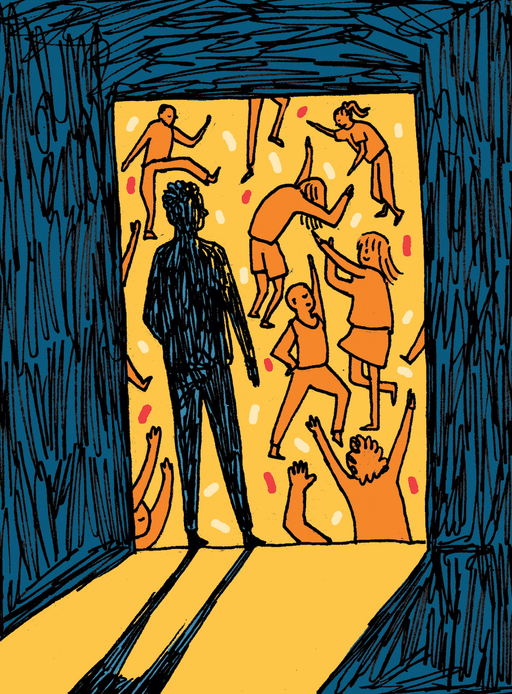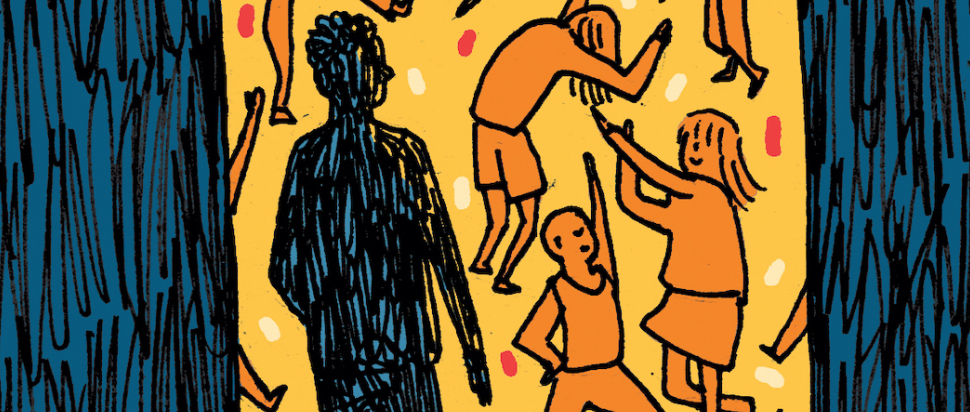Navigating queer physical spaces post-lockdown
We speak to queer people who embraced their sexuality during lockdown about entering IRL queer spaces for the first time
Queerness binds itself to its spaces – probably because there are so many spaces where queerness cannot truly exist. Whether it’s a club night, a community group or a book shop (Category Is Books has all our hearts), we carve out queer physical spaces so that we may exist, in public, without fear. But the last year has, of course, made it difficult for us to access these queer spaces. As a result, we’ve been doing a whole lot of queer soul searching – just without I Wanna Dance with Somebody blaring in the background. The reopening of queer physical spaces is therefore somewhat of a big deal: it marks a reconnection with a community and with one’s self, especially for young people and people just coming to terms with their sexuality.
For many, lockdown itself was a queer space – just not in the physical sense. Krish*, 24, found that lockdown gave them the space to truly connect with their queerness. Over the past year they’ve not only become more comfortable with their asexuality but also their romantic feelings, noting a difference between their attraction to women and their attraction to men. But Krish has also come to explore their gender. "I’m still figuring this bit out but I've been feeling comfortable with identifying as non-binary," they say.
Lockdown saw Emma, 21, explore her queerness in a more "intimate" way than ever before. "Being shuttered off from the outside world made me look inward," she says. "It kind of took a global pandemic for me to fully accept [my sexuality]; to give myself the permission to be gay."
But having this queer connection mid pandemic certainly impacted Emma. "There's the sense that some time in my queer coming-of-age has been stolen from me," she says. Queer people often find themselves in those quintessential coming-of-age moments later in life than straight people – the latter don’t have to tackle queerphobia, within themselves and others, just to shag another person for the first time. Queer physical spaces are tantamount to these experiences – the first time on a queer dancefloor is a memorable experience for many – and so, their absence has taken its toll on our connection to our queerness itself.

Given this social distance, the queer community, like everyone, gravitated to the online world as lockdown dawned. It was a homecoming of sorts: many of us initially came to accept or discover our queerness amid Tumblr scrolls and YouTube comment sections. A shift to the online sphere only deepened the self-exploration lockdown incited. A Google Doc, originally published in 2018, titled ‘Am I a Lesbian?’ saw a renaissance during lockdown. "I found it and everything just slotted into place," says Krish. The online document is a guide for women questioning their sexuality and its reemergence over the last year was mainly facilitated by the forcible move of our whole lives and identities to the online world.
It’s partly the comfort of online spaces that makes the move back to physical spaces slightly daunting. Emma, who feels "seen" in her online queer spaces, is nervous about the return to queer clubs and bars. "In [queer] physical spaces, I guess there can be more hesitation from other queer people as those spaces have been overrun by straight people," she says. "I've been questioned about my queerness so many times in physical spaces, I don't know if that aspect will change."
This anxiety is shared by Krish: "It all is still really new to me and I can't shake the feeling of not being ‘queer enough’," they say. "I am generally quite anxious about going out to meet people when lockdown eases anyway because it’s been so long but this especially is a worry." There’s a somewhat symbiotic relationship between queerness and queer spaces: to truly exist in queer spaces demands a person’s queerness; but these spaces are also only made queer by the queerness of those who exist within them. That puts pressure on a community’s queer identity – as if the collective end-of-lockdown anxiety we’re all feeling isn’t enough to deal with.
But there’s also an excitement, a palpable joy at the prospect of existing in a queer space, whether for the first time or the 40th. "I honestly can't wait to go to a gay club again, or any club for that matter," Emma says. "When the world is open again, I want to live a beautiful queer life with a vengeance."
We’ve lived a closed off life for the past year, a life not dissimilar to the years that many queer people spent closeted. Now that our spaces are open, ready to receive us, so too are we ready to open ourselves up to them and the community they’re home to once more.
*Names have been changed to protect identities
